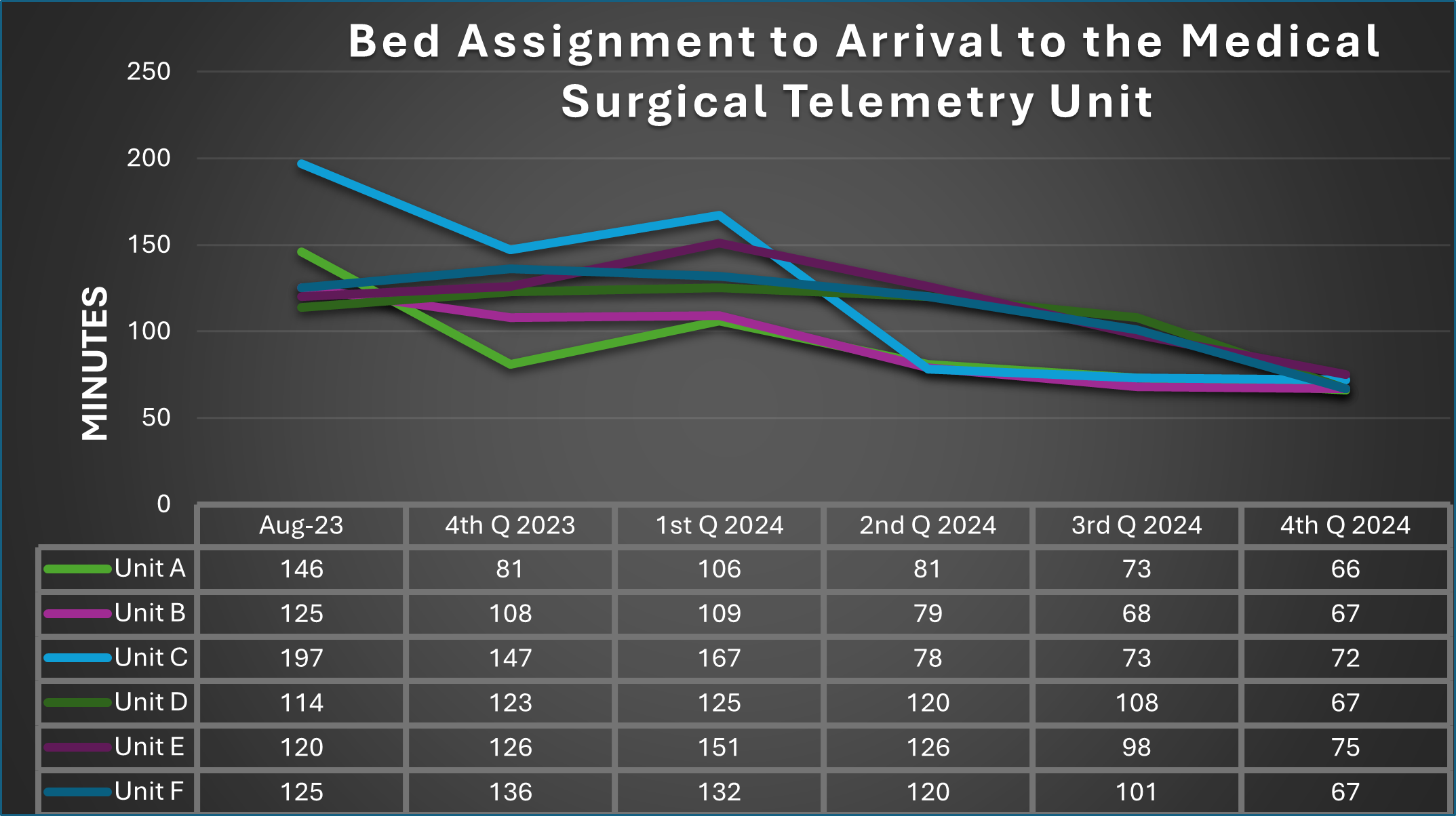Emergency department (ED) throughput has become a focus for many hospitals across the country. Our clinical nurses and nurse leaders undertook a process improvement initiative to revamp nursing handoff during unit transfer, with a goal of improving patient throughput. ED clinical nurses face barriers in communicating handoff reports to inpatient nursing units, resulting in delays in patient transfers and prolonged length of stay in the ED. Prolonged length of stay in the ED leads to overcrowding and potential negative patient experiences from which it can be difficult to recover. To improve patient transfer handoff reports, a one-year pilot was initiated to determine if an electronic handoff report system could be utilized in lieu of the conventional telephone handoff report.
The electronic handoff report pilot started with one 38-bed medical-surgical telemetry unit and involved all patients admitted through the ED who required a medical-surgical telemetry level of care. Involving the administrative nursing supervisor was essential in early bed planning. The goal of the pilot was to assign an admitted patient in the ED to a medical-surgical telemetry unit bed when it became available on the inpatient unit and simultaneously call transport for the patient’s transfer. While the patient was being transported, the receiving unit obtained report from the electronic health record utilizing the SBAR feature. Emphasis was given to the importance of obtaining SBAR report prior to the patients’ arrival. Managers on the unit reinforced this process early in the pilot to ensure compliance. Once the patient arrived at the receiving unit, the clinical nurse called the ED clinical nurse to complete the handoff process and answer any remaining questions about the patient. The goal of this initiative was to achieve a 60-minute arrival time from the ED to the receiving medical-surgical telemetry unit once the bed had been assigned. Over the span of several months, six medical-surgical telemetry units were added to the pilot.
A team of ED clinical nurses, medical-surgical telemetry clinical nurses, and nurse leaders developed guidelines to achieve a goal of transferring a patient from the ED to the medical-surgical telemetry unit within 60 minutes of the bed being assigned. Weekly interdisciplinary meetings occurred to discuss barriers and challenges to the new process of an electronic handoff report. It was determined that the transport supervisor and environmental service supervisor should be added to the team, as they play an integral role in patient throughput. The administrative nursing supervisor would notify the clinical nurses of both the ED and the medical-surgical telemetry units of the patient’s booking. Once the patient arrived at the medical-surgical telemetry unit, the clinical nurse on the medical-surgical telemetry unit would call the nurse in the ED to finalize the handoff with any remaining questions. This is a critical step in the process to ensure a safe and complete handoff has taken place.
The electronic handoff report was implemented in six medical-surgical telemetry units. ED clinical nurses describe improved efficiency in patient throughput and improved staff morale. Nurse leaders identified a noticeable improvement in patient throughput. The medical-surgical telemetry clinical nurses had an adjustment period as they acclimated to the efficiency of transferring a patient. We continue our journey to reach our goal of 30 minutes.

An optimized patient throughput process is critical to effectively transfer patients from the ED to an inpatient unit. Efficient patient throughput will enhance the patient’s experience and staff satisfaction. Collaborating with clinical nurses, senior nurse leaders, and ancillary departments is critical to the success of the initiative. Ongoing review of data and celebration of success is essential to motivate goal achievement.
Content published on the Medical-Surgical Monitor represents the views, thoughts, and opinions of the authors and may not necessarily reflect the views, thoughts, and opinions of the Academy of Medical-Surgical Nurses.